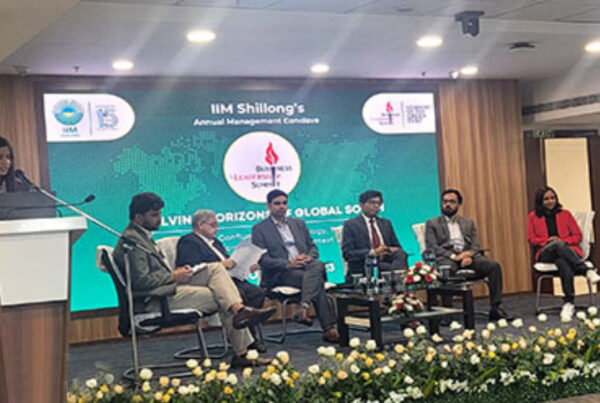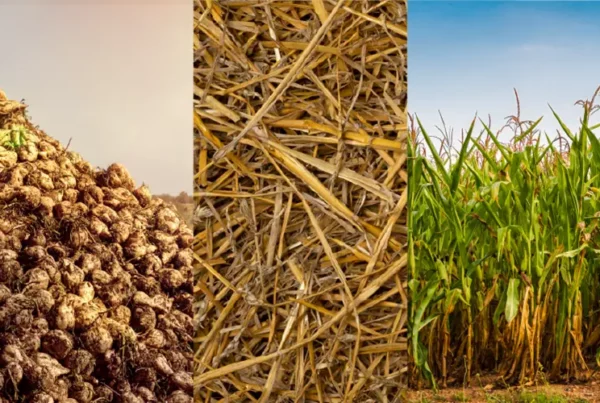Indian-Made Foreign Liquor (IMFL) is a fast-growing segment of the Indian alcoholic drinks market. As per industry estimates in FY 2021, the IMFL market stood at about US$20 million. It is likely to expand to over US$32 million by FY 2025.
The IMFL market grew ~13% to 350 million cases in 2022. Whiskey, which represents two-thirds of the overall market, grew 17%, while brandy, the second biggest category, grew 37%, rum 41%, vodka 55%, and gin sales 129%.
While alcohol has been integral to India’s culture, serving as a homegrown staple, its consumption was never encouraged. But times are changing.
Factors driving growth in the Indian alcoholic drinks market
India is among the fastest growing alcoholic drinks market globally, estimated at US$52.5 billion. It is expected to clock a CAGR of 6.8% until 2023.
Various factors are shaping growth in the alcoholic drinks market in India.
- The biggest of these is socio-economic evolution because of rising urbanization, increasing disposable income, greater access to information afforded by growing internet penetration, changing lifestyle mainly because of the growing corporate culture, the rise of fine dining in India, growing empowerment of women, etc. This is noticeable in the rise of the Indian café and pub market.
- Demography has a crucial role to play. The population of younger people is increasing. They are high on both consciousness about health and awareness of taste. This section is more willing to experiment and try out new flavors.
- Technological advancements have significantly enhanced curation, resulting in the production of top-quality products.
- Leveraging these trends, alcoholic drinks producers are strategizing to expand operations and attract customers. Companies are coming up with new products to match taste and preference, such as zero or low alcohol variants, while shops/stores are becoming posher to cater better to the growing crowd and provide enhanced experience. Also, online availability of products has increased.
Key trends in the IMFLindustry
- Pandemic effect
The pandemic played a key role in bringing about a turnaround in the Indian liquor market, especially Indian-made foreign liquor.
Lockdowns prompted people to try out different flavors and tastes. As travel expenses decreased amid restrictions, people used the extra saving to improve the quality of the liquor they bought. This led to product upgrades and changes in flavor profiles.
Also, during lockdowns, several people moved back to their hometowns. With this, the consumption of drinks increased in tier-2 cities. Rising penetration of the internet and influence of social media bolstered the trend.
Consumers have become more health-conscious. They now prefer quality drinks, even if it comes at a higher cost.
- IMFL by category
Whiskey
Whiskey is the most preferred IMFL in India. India is at the sixth position among the biggest destinations globally for Scotch whiskey.
Some of the most popular brands are Amrut Fusion Single Malt Whisky, Amrut Indian Peated Single Malt Whisky, and Amrut Intermediate Sherry; McDowell’s No 1; Royal Challenge, Signature and Antiquity.
Factors that impact the taste of whiskey produced in India are the climate that differs significantly because of the country’s vast geographic expanse; and the strength of alcohol that is regulated by policies (currently capped at 42.8%).
Within the category, preference for the drink changes from region to region. Brandy and rum are more favored in South India, for instance, while in the other parts of the country, whiskey is preferred, with brandy being the favored option during winters.
Other brown drinks
Rum is another popular drink in the IMFL segment. One of the most popular brands is Old Monk, a dark rum. In this category, too, new brands are being launched to cater to changing tastes and preferences.
Wines
The consumption of wines in India is largely confined to occasions. However, the taste for red and white wines is developing, influenced by trends and styles in the West. Moreover, since the climate in India is different compared to Europe, the product differs in quality and taste.
Also, wines in India are made to compliment the Indian cuisine, which is primarily spicy. This, too, affects their taste compared to those produced outside India.
The popular ones are Cabernet Sauvignon and Shiraz (red wines by Fratelli); and white wines, such as Chenin and Sauvignon Blanc. Sparkling and rosé, too, are attracting interest. Usually, the 35+ age group gravitates towards premium products.
According to a study conducted by Avalon Global Research, the key wine producing states in India are Maharashtra, Karnataka, Goa, and Himachal Pradesh; of these, Sula Vineyards in Maharashtra commands 60% share in the market. Growth in the market is led by increasing wine-based tourism, a growing young population and rising influence of Western culture.
Beer
Beer is a favorite across age groups and genders, primarily because of the hot tropical climate. People in metro cities such as New Delhi or Mumbai or Bengaluru, especially, are more inclined to experiment with taste in line with the global trends. Due to this reason, the popularity of ales is growing—their characteristic spicy/tangy flavor gels well with the Indian palate.
White spirits
In India, the consumption of gin has proliferated in the urban areas. There is greater inclination towards lighter and fruity flavors. This is prompting distillers to come up with new products. Some examples are Nao Spirits’ Greater Than (a gin with fennel and ginger as ingredients) and Hapusa (with botanicals such as Himalayan Juniper and Gondhraj). However, heavier, and oily spirits are yet to see an uptake, as these don’t settle with the climate in India.
Cocktails
This segment perhaps benefitted the most during the pandemic. With the focus on making almost everything at home, alco-beverage brands tapped the opportunity to introduce cocktail mixes for at-home preparation.
For example, Moet Hennessy India offers a craft mixer, whileSwizzle, an Indian cocktail kit brand, offers over 20 types of cocktails and covers drinks such as beer, rum, tequila, bourbon, vodka.
Non-alcoholic beverages
While 0% alcohol drinks such as 0.0% beer and 0% Ready to Drink wines and spirits have been popular globally, these are gradually gaining traction in India.
However, since most of these alternatives have a high sugar or additive content, they compromise the health benefit non-alcoholic or alcohol-free beverages are supposed to offer. Hence, there is scope for developing drinks with low content of harmful ingredients or low calories.
- Premiumization
While the IMFL segment is growing, given the economic status of the bulk of the population in India, local drinks far outweigh Indian-made foreign liquors. Just about 7 states account for over 50% of the total revenues from IMFL.
IMFL manufacturers need to devise a strategy where they can increase the revenue contribution from the premium segment, while also attracting the local drink consumers to the “low-priced” segment. This will require manufacturers to re-orient their resources.
One way is through premiumization. This is especially prominent in the wine category. In India, high taxation (60-70%), except in Karnataka and Maharashtra, has been a deterrent for wineries in the country. On the other hand, consumer demand in India has grown with a wider palate for different tastes. Furthermore, imported wine that made its way to glasses, such as Jacobs Creek by Pernod Ricard, gave a taste of a foreign product at India prices. Wine imports are, therefore, a key factor behind premiumization.
Discretionary spending in India is expected to increase. The World Economic Forum believes India is likely to boast the third-highest number of high-income households, after China and the US, by 2030.
This has prompted prominent brands such as Sula Vineyards, Grover Zampa, Fratelli and Krsma to offer premium products. Also, while Indian wine manufacturers have been exporting to markets in the US or UK, domestic sales account for the bulk of their revenues. Hence, manufacturers such as Sula Vineyards prefer to focus more on the Indian market through their premium products.
Plus, premiumization plays well for producers, such as Krsma Estates, that have significant international expansion plans.
Yet another factor that is boosting premiumization is the impact of the government’s ethanol blending program (EBP). It is creating pressures on the raw material supply and margin fronts for IMFL producers. This, too, is driving these companies to gravitate towards premiumization.
- Mass-market products
While premiumization is picking up as companies eye export markets, investment in mass-market brands is also increasing as companies look to cater to the growing domestic demand. Factors such as availability of quality raw materials (grains, fruits, etc.), along with favorable climatic conditions, are fueling the trend.
Some brands are also working to expand their portfolio to cater to tier 1, 2 and 3 cities. Sula introduced 330 ml wine cans with just 8% alcohol content, priced at ₹180. Grover Zampa too is working to introduce low-alcoholic wines.
To conclude
India-made foreign liquor is a fast-growing segment with strong prospects. As affordability improves, social barriers are relaxed, the life-style changes and companies adopt prudent marketing, IMFL sales are rising. With the opening of the economy and entry of foreign brands, competition in the space has increased, boding well for the indigenous brands. Gradually, sales of IMFL abroad are picking up too.
That said, there are several challenges as well. These include price-based competition with local favorites, restrictions on open and direct advertising, high taxation that generates substantial revenue for states, and stringent regulations to deter habitual drinking as a prevention against its ill-effects on the society.
This has made it a rather interesting time for IMFL companies. They will need to adopt incisive strategies, mindful of responsible drinking, and strike a balance with the prevailing trends. This will enable them to tap the high business potential in the domain, minimize conflict of interest and overall contribute to India’s development as a reliable beverage production destination.
For further insights on business and consumer research, connect with Bhasker Canagaradjou, Vice President at Avalon Global Research.




